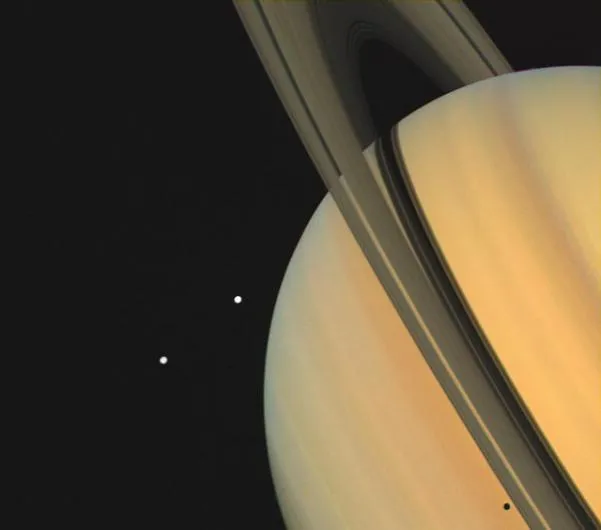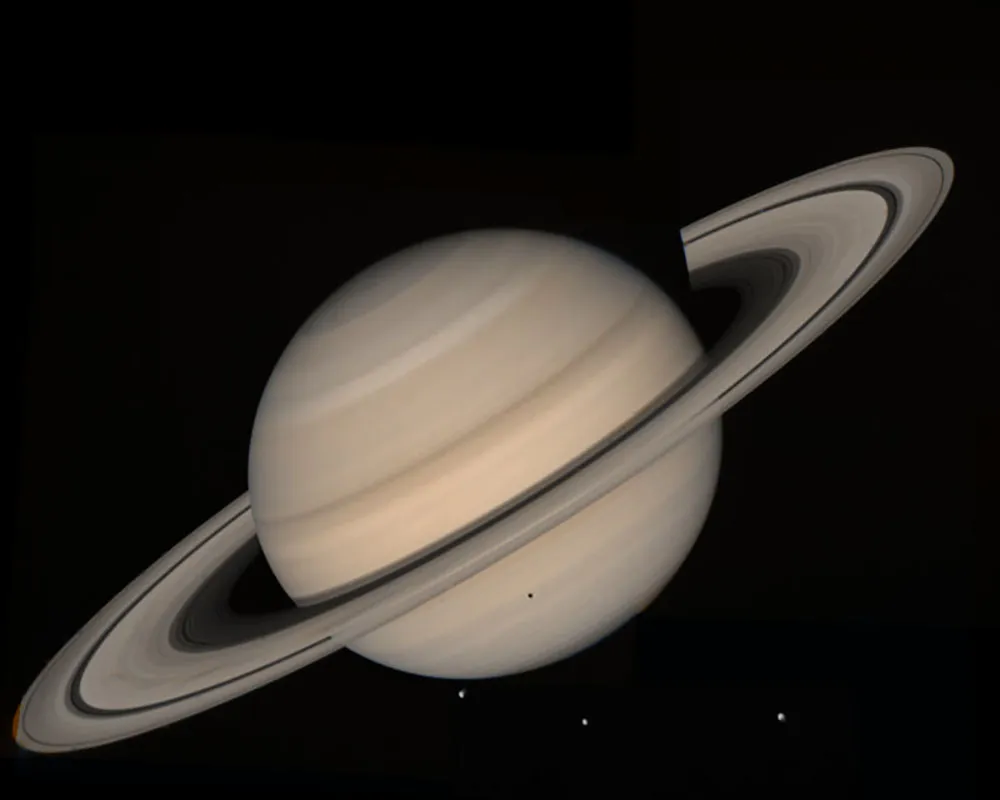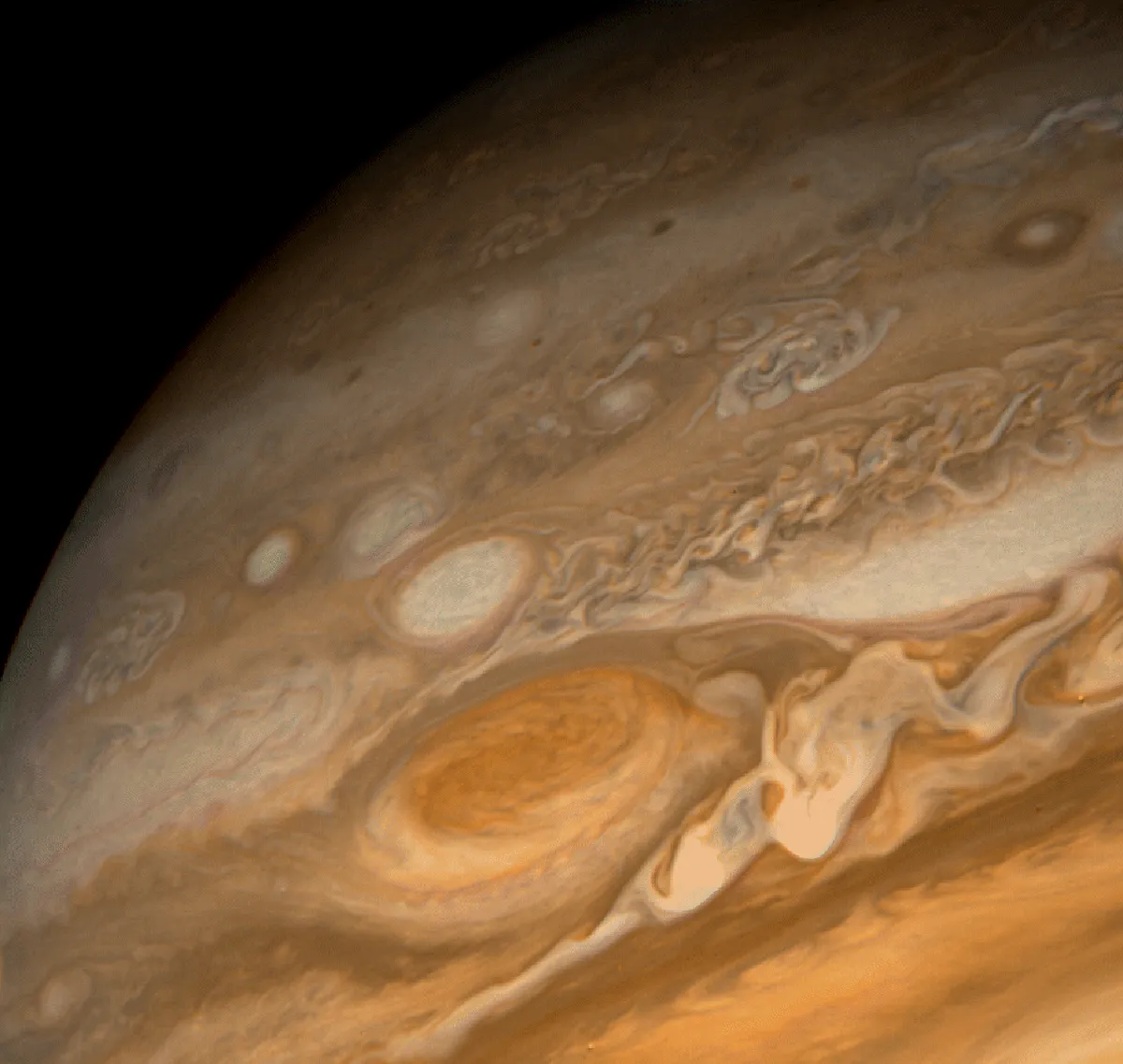NASA has released video footage of an historic NASA news conference in which Carl Sagan and Ed Stone reveal the 'family portrait' of Solar System planets captured by the Voyager probes.
In the video, which was recorded on 6 June 1990, Stone and Sagan mark the conclusion of the Voyager mission's Solar System tour with a debriefing.
More about Voyager

They reveal Voyager’s 'Solar System Family Portrait', a composite mosaic image showing six of the planets of the Solar System: Jupiter, Earth, Venus, Saturn, Uranus and Neptune.
The portrait was captured by Voyager 1 on 14 February 1990, when the spacecraft was 6 billion km (3.7 billion miles) from the Sun.

Voyager was humanity's first 'grand tour' of the Solar System, and the first and only time we've ever sent spacecraft out to Uranus and Neptune.
Voyager 2 launched on 20 August 1977, and Voyager 1 launched on 5 September 1977.
During their tour of the Solar System, they both made flybys of Jupiter and Saturn, and Voyager 2 then proceeded to make flybys of Uranus and Neptune.
The two spacecraft have now reached the edge of the Solar System, making them the most distant objects built by humans.
What's more, they're still sending data back to NASA scientists, albeit in a much diminished form, given they're running low on fuel.
How wrong we were
In the video, the late Carl Sagan underscores just how illuminating the Voyager missions were, in terms of their contributions to planetary science.
"Think of the number of objects that we now know are in the Solar System, that we didn't even know existed [before Voyager launched].
"Then think of how many were mere points of light, where we had no idea what the surface features or any details were.
"And then think of how wrong we were in our guesses about so many of the objects that we thought we knew something about.
"Voyager and Viking have wholly changed our knowledge of the Solar System."

Pale Blue Dot
Sagan also explains what Voyager's family portrait tells us about humanity's place in the vastness of the cosmos.
In the family portrait, each planet is a pinprick of light, each taking up about one pixel on the screen.
Sagan alludes to his famous conceit of the 'pale blue dot'; a symbol of how insignificant our planet is against the enormity of even just our own cosmic backyard.

In the press conference, Sagan shares a few lines of what would eventually become his well-known essay about the 'pale blue dot' image.
"This is where we live, on a blue dot," Sagan says.
"That’s where everyone you know and everyone you have heard of and every human being who ever lived, lived out their life. It’s a very small stage in a great cosmic arena.
"And again, just speaking for myself, I think this perspective underscores our responsibility to preserve and cherish that blue dot, the only home we have."

Voyager's discoveries
The video also sees Voyager project scientist Ed Stone talk about the biggest discoveries made by the twin probes, and what the future might hold as they begin their journey to penetrate the outer reaches of the Solar System.
"The space between the stars, interstellar space, is filled with a very dilute gas called the interstellar medium, and each star blows a bubble into that gas," Stone says.

"We don’t know how large the Sun’s bubble is. The boundary of this bubble may be 100 times as far as the distance from the Earth to the Sun. No one knows!"
Between the time this video was recorded and now, the Voyagers have continued their journey beyond the Solar System.
NASA says today the Voyager 1 and 2 probes are 25 billion km (15 billion miles) and 21 billion km (13 billion miles) from Earth, respectively.
What are your favourite memories from the Voyager era? What do you think were its biggest discoveries? Let us know by emailing contactus@skyatnightmagazine.com

